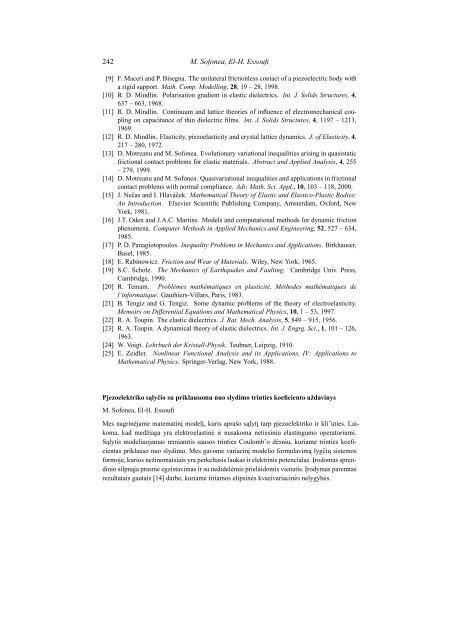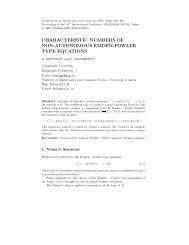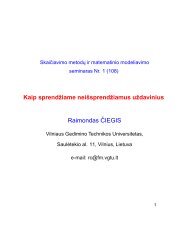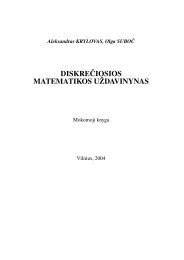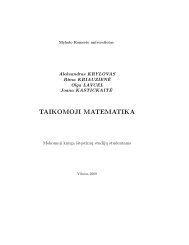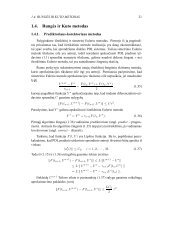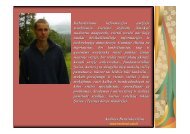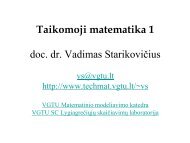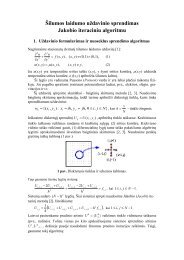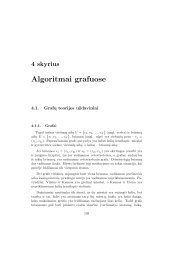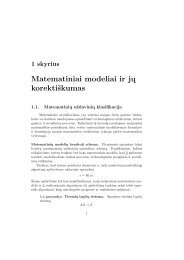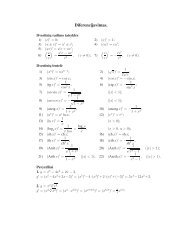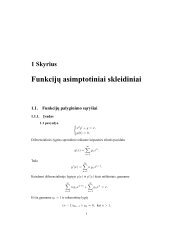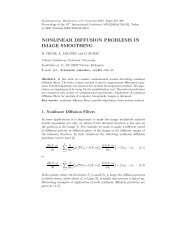a piezoelectric contact problem with slip dependent coefficient of ...
a piezoelectric contact problem with slip dependent coefficient of ...
a piezoelectric contact problem with slip dependent coefficient of ...
You also want an ePaper? Increase the reach of your titles
YUMPU automatically turns print PDFs into web optimized ePapers that Google loves.
242 M. S<strong>of</strong>onea, El-H. Essoufi[9] F. Maceri and P. Bisegna. The unilateral frictionless <strong>contact</strong> <strong>of</strong> a <strong>piezoelectric</strong> body <strong>with</strong>a rigid support. Math. Comp. Modelling, 28, 19 – 28, 1998.[10] R. D. Mindlin. Polarisation gradient in elastic dielectrics. Int. J. Solids Structures, 4,637 – 663, 1968.[11] R. D. Mindlin. Continuum and lattice theories <strong>of</strong> influence <strong>of</strong> electromechanical couplingon capacitance <strong>of</strong> thin dielectric films. Int. J. Solids Structures, 4, 1197 – 1213,1969.[12] R. D. Mindlin. Elasticity, piezoelasticity and crystal lattice dynamics. J. <strong>of</strong> Elasticity, 4,217 – 280, 1972.[13] D. Motreanu and M. S<strong>of</strong>onea. Evolutionary variational inequalities arising in quasistaticfrictional <strong>contact</strong> <strong>problem</strong>s for elastic materials. Abstract and Applied Analysis, 4, 255– 279, 1999.[14] D. Motreanu and M. S<strong>of</strong>onea. Quasivariational inequalities and applications in frictional<strong>contact</strong> <strong>problem</strong>s <strong>with</strong> normal compliance. Adv. Math. Sci. Appl., 10, 103 – 118, 2000.[15] J. Nečas and I. Hlaváček. Mathematical Theory <strong>of</strong> Elastic and Elastico-Plastic Bodies:An Introduction. Elsevier Scientific Publishing Company, Amsterdam, Oxford, NewYork, 1981.[16] J.T. Oden and J.A.C. Martins. Models and computational methods for dynamic frictionphenomena. Computer Methods in Applied Mechanics and Engineering, 52, 527 – 634,1985.[17] P. D. Panagiotopoulos. Inequality Problems in Mechanics and Applications. Birkhauser,Basel, 1985.[18] E. Rabinowicz. Friction and Wear <strong>of</strong> Materials. Wiley, New York, 1965.[19] S.C. Scholz. The Mechanics <strong>of</strong> Earthquakes and Faulting. Cambridge Univ. Press,Cambridge, 1990.[20] R. Temam. Problèmes mathématiques en plasticité, Méthodes mathématiques del’informatique. Gauthiers-Villars, Paris, 1983.[21] B. Tengiz and G. Tengiz. Some dynamic <strong>problem</strong>s <strong>of</strong> the theory <strong>of</strong> electroelasticity.Memoirs on Differential Equations and Mathematical Physics, 10, 1 – 53, 1997.[22] R. A. Toupin. The elastic dielectrics. J. Rat. Mech. Analysis, 5, 849 – 915, 1956.[23] R. A. Toupin. A dynamical theory <strong>of</strong> elastic dielectrics. Int. J. Engrg. Sci., 1, 101 – 126,1963.[24] W. Voigt. Lehrbuch der Kristall-Physik. Teubner, Leipzig, 1910.[25] E. Zeidler. Nonlinear Functional Analysis and its Applications. IV: Applications toMathematical Physics. Springer-Verlag, New York, 1988.Pjezoelektriko salyčio ˛ su priklausomu nuo slydimo trinties koeficiento uždavinysM. S<strong>of</strong>onea, El-H. EssoufiMes nagrinėjame matematinį modelį, kuris aprašo sąlytį tarp pjezoelektriko ir kli ūties. Laikoma,kad medžiaga yra elektroelastinė ir nusakoma netiesiniu elastingumo operatoriumi.Sąlytis modeliuojamas remiamtis sausos trinties Coulomb’o dėsniu, kuriame trinties koeficientaspriklauso nuo slydimo. Mes gavome variacinį modelio formulavima˛lygčių sistemosformoje, kurios nežinomaisiais yra perkeltasis laukas ir elektrinis potencialas. Įrodomas sprendiniosilpnąja prasme egzistavimas ir su nedidelėmis prielaidomis vienatis. Įrodymas paremtasrezultatais gautais [14] darbe, kuriame tiriamos elipsinės kvazivariacinės nelygybės.


